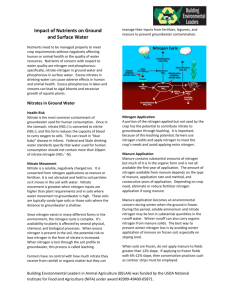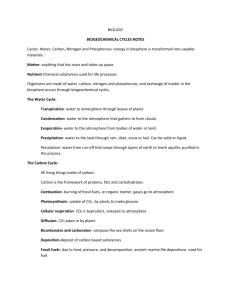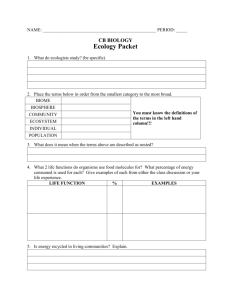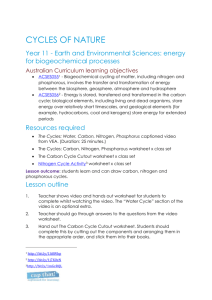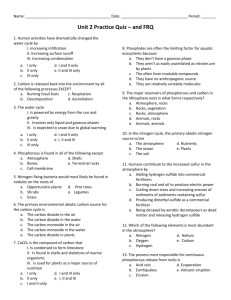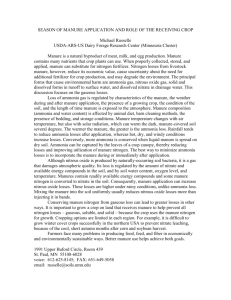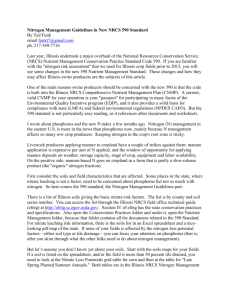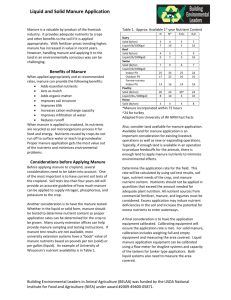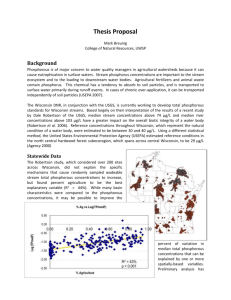11 questions
advertisement
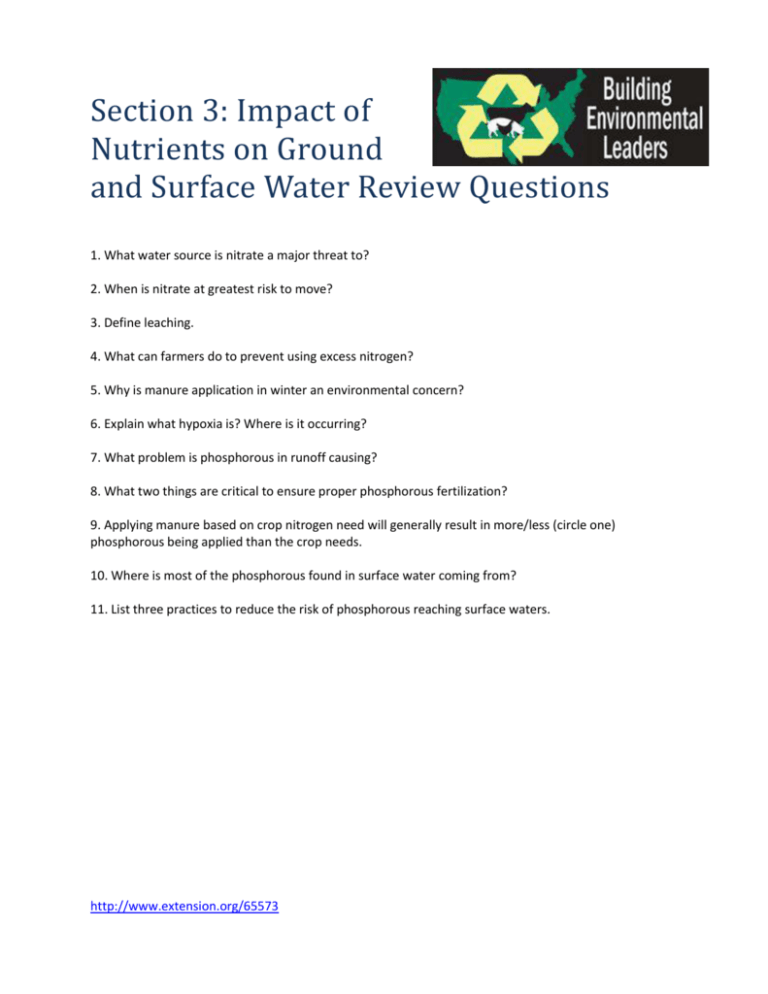
Section 3: Impact of Nutrients on Ground and Surface Water Review Questions 1. What water source is nitrate a major threat to? 2. When is nitrate at greatest risk to move? 3. Define leaching. 4. What can farmers do to prevent using excess nitrogen? 5. Why is manure application in winter an environmental concern? 6. Explain what hypoxia is? Where is it occurring? 7. What problem is phosphorous in runoff causing? 8. What two things are critical to ensure proper phosphorous fertilization? 9. Applying manure based on crop nitrogen need will generally result in more/less (circle one) phosphorous being applied than the crop needs. 10. Where is most of the phosphorous found in surface water coming from? 11. List three practices to reduce the risk of phosphorous reaching surface waters. http://www.extension.org/65573 Section 3 Impact of Nutrients on Ground and Surface Water Review Answers 1. What water source is nitrate a major threat to? a. Groundwater 2. When is nitrate at greatest risk to move? a. When nitrogen inputs are higher than plant requirements and in soils where water movement to groundwater is high 3. Define leaching. a. When nitrogen is lost through the soil profile to groundwater 4. What can farmers do to prevent using excess nitrogen? a. Manage their inputs from fertilizer, legumes, and manure 5. Why is manure application in winter an environmental concern? a. Nitrogen may be lost in substantial quantities in the runoff water 6. Explain what hypoxia is? Where is it occurring? a. Nitrogen is causing the formation of a “dead” zone that is deplete of oxygen b. Gulf of Mexico 7. What problem is phosphorous in runoff causing? a. Encourages the growth of algae and nuisance weeds in surface waters, especially lakes where water movement is minimal 8. What two things are critical to ensure proper phosphorous fertilization? a. Soil tests and realistic yield goals 9. Applying manure based on crop nitrogen need will generally result in more/less (circle one) phosphorous being applied than the crop needs. 10. Where is most of the phosphorous found in surface water coming from? a. Organic matter and soil particles eroding from the land 11. List three practices to reduce the risk of phosphorous reaching surface waters. a. Using soil-erosion control practices such as buffer strips to minimize soil loss and runoff b. Avoid applying manure to sloping, frozen soils c. Apply recommended rates to crop based on soil test d. Credit phosphorous contributions from manure and other organic wastes e. Incorporate or inject manure f. Control runoff from barnyards and feedlots g. Store manure in properly located and constructed facilities http://www.extension.org/65573
